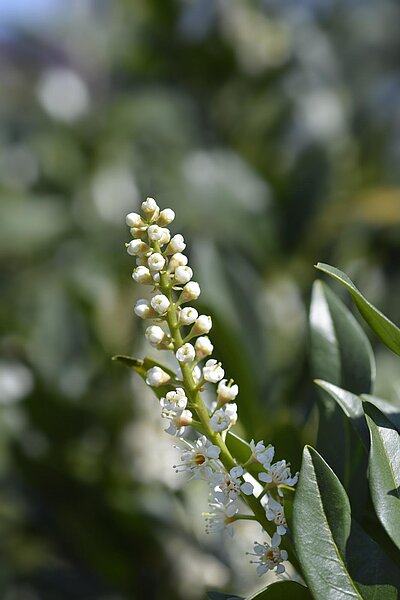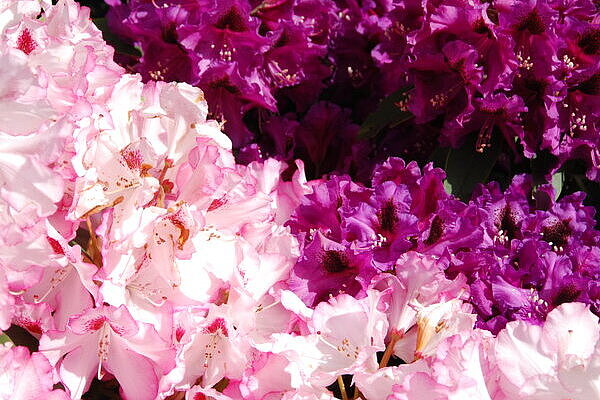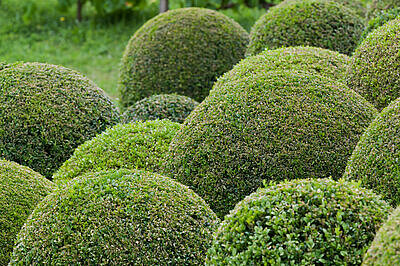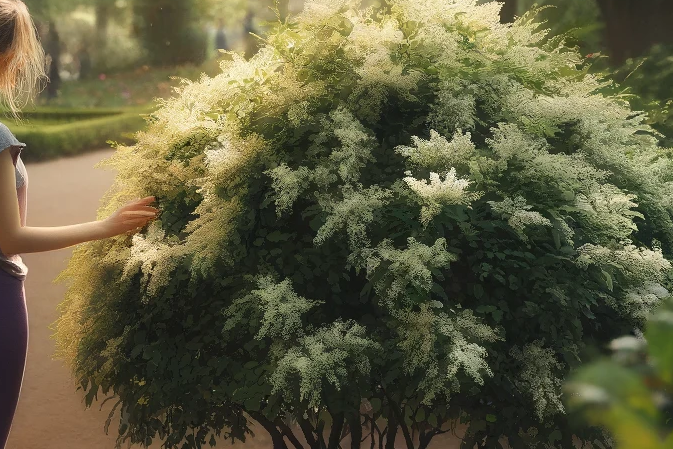Cherry laurel

What is cherry laurel?
Cherry laurel (Prunus laurocerasus) belongs to the rose family and originally comes from south-eastern Europe and western Asia. It is also called laurel cherry because its leaves are reminiscent of laurel and its fruits of cherries. The leaves are elongated, leathery and shiny on the upper side. If you rub them, they smell of bitter almonds. The cherry laurel flowers white from April to May and produces fleshy, round fruits from August to September, which are initially green and later turn black.
Why is cherry laurel poisonous to dogs?
Cherry laurel is poisonous to dogs because it contains the hydrocyanic acid glycoside prunasin. This substance is converted to hydrocyanic acid in the dog's stomach, which causes symptoms of poisoning. All parts of the plant are poisonous, especially the leaves and seeds. The toxicity varies depending on the variety and season.
What are the symptoms of cherry laurel poisoning?
If your dog has eaten cherry laurel, he may show the following symptoms:
- Increased salivation
- Irritation of the mucous membranes
- Gastrointestinal complaints (nausea, abdominal pain, vomiting, diarrhea)
- Breathing difficulties up to and including respiratory paralysis
The severity of the poisoning depends on how much the dog has eaten and how sensitively it reacts to the toxin. Just a few leaves or seeds can cause severe problems.
What should you do if your dog has eaten laurel?
If you suspect that your dog has eaten cherry laurel, you should take him to the vet immediately. The sooner he is treated, the better his chances of recovery. As a first aid measure, you can give him plenty of water or charcoal tablets to bind the poison. However, this is no substitute for a visit to the vet!
How can I protect my dog from cherry laurel?
The best protection for your dog is not to plant cherry laurel in your garden or to remove it if it is already there. If you take your dog for a walk or leave it in someone else's garden, you should always keep an eye on it so that it doesn't nibble on the plants. Even though most dogs would spit out the bitter leaves, they may eat some out of curiosity or boredom.
Cherry laurel is a beautiful plant for the garden, but unfortunately it is also a dangerous poisonous plant for dogs. If your dog eats it, he can develop severe symptoms of poisoning, which can be life-threatening. You should therefore keep your dog away from cherry laurel and take him to the vet immediately if he has eaten it.
Properties 2
Are you looking for other ingredients with a specific property?
Just click on them to find more.
If you notice any signs of hypersensitivity or poisoning in your dog, you should see your vet immediately. We are not a substitute for a vet, but we try to be as accurate as possible. Every dog reacts differently and we recommend you get a second opinion or consult your vet if in doubt.
Stay healthy and take good care of your four-legged friend!😊
Similar to Cherry laurel
Unfortunately, ivy is poisonous to dogs. Both the leaves and the berries contain saponins, which can lead to symptoms of poisoning. These are vomitingdiarrheasalivationtremblingshortness of...
Rhododendron belongs to the heather family and comprises more than 1000 species that can be found in different regions of the world. Most varieties bloom in spring, some also in summer or fall....
Boxwood belongs to the genus Buxus and there are more than sixty species. The best-known species is the common boxwood (Buxus sempervirens), which can grow up to four meters high. Its leaves are...
Privet (Ligustrum vulgare) is a deciduous to winter-green shrub that belongs to the olive family. It grows wild in hedges and on forest edges as well as in gardens. It is often used as a hedge plant...



